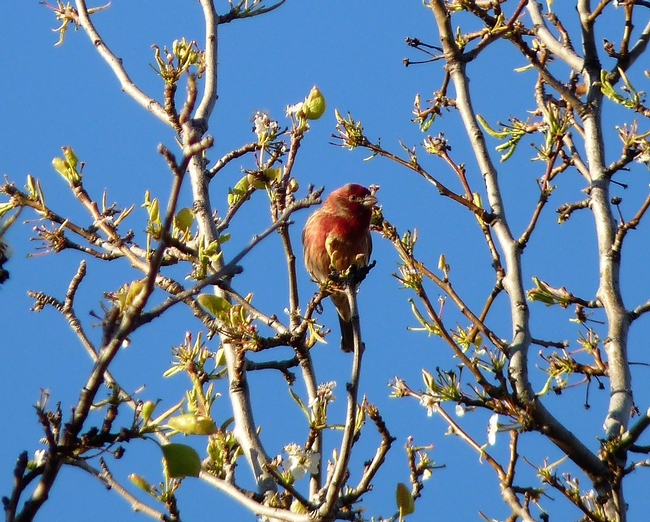Around the Bird Feeder
I've always liked wild birds, but am relatively new to the world of bird feeders. I hung my first bird feeder a couple of years ago, filled it with a generic wild bird mix, and attracted a few limited species of birds. It wasn't until I researched various bird foods, and discovered black oil sunflower seeds, that my backyard bird population exploded. Black oil sunflower seeds contain 28 percent fat, 25 percent fiber, 15 percent protein, are meatier, and have a thinner shell than stripped sunflower seeds. It is the most popular seed choice among back yard birds, including the mourning dove, black headed grosbeak, oak titmouse, chestnut chickadee, house sparrow, and American goldfinch, all of which are common birds found year round in Solano County according to the Napa Solano Audubon Society. The seeds that fall onto the ground attract quail. It's adorable to watch a family of quail scurry beneath the bird feeders, scouring for seed.
Black oil sunflower seeds are easy to grow. The seeds from the package of birdseed may be planted in the ground during spring, after the last frost, when the weather has become warmer. Plant the seeds in full sun and loose soil, 1” to 2” down, and 8” to 12” apart. Water every day to establish, then deep-water every other day.
My favorite little back yard bird is the house finch, who also loves black oil sunflower seeds. These birds are abundant in Solano County, but they seem exotic to me, because of the stunning red head, throat, and breast of the males. The red color is comprised of pigments contained in the birds' food during molt. The more pigments, the redder the male bird becomes. Females are attracted to the males with the most striking red coloration.
Many years ago, a young couple took up residence in a potted rose tree, just outside of our sliding glass door. They worked hard building their perfect nest, while our family was away at work and school. Imagine their dismay when they discovered that their new home was just two feet away from a door through which noisy and curious teenagers, and a large Labrador retriever, exited several times per day. By that time the female was nesting, however, and they were stuck with their poorly planned nursery. It gave us a wonderful “birds eye view” into the nesting, hatching and feeding of these birds.
The house finch is native to the western United States, but has been introduced throughout the eastern states, and to Hawaii. Many of them were released on Long Island, New York, in 1940, after attempts to sell them as caged birds failed. There are currently between 267 million and 1.4 billion of these birds throughout North America. House finches eat plant materials almost exclusively. Unlike most birds who exist on a vegetarian diet as adults but feed their young animal proteins, the house finch feeds their nestlings only plant food.
In the spring, my yard is alive with the songs of the house finch. There are often 50 or more birds fliting through the flowering pear trees (Pyrus calleryana), choosing mates and gathering nesting materials. I have to refill both bird feeders every day during that time, and go through a 30 pound bag of black oil sunflower seeds in about a week. During the summer, the activity ceases, and the bird feeders remain full for weeks at a time. I had assumed that the birds were migratory, and had left the area. However, through research I found that the house finch, while classified as migratory, usually remains in Solano County year round, but relies less on bird feeders during the summer when abundant wild plant food is available. The birds who reside in the coldest of habitats fly south to warmer climates. Foods enjoyed by the house finch include wild mustard seed (Sinapis arvensis), thistle (Cirsium arvense), mulberry (Morus spp.), poison oak (Toxicodendron diversilobum), cactus, stone fruit and berries. Their love of fruits and berries has landed them on the UC Davis Integrated Pest Management (IPM) list.
While the house finch will eat many grasses, berries and nuts, it is advisable to plant California native plants in your garden to attract them, as well as hundreds of other native species. California natives of special delight to the house finch are elderberry (Sambucas mexicana), buckwheat (Eriogonum spp.), pine (Pinus spp.), and rabbit bush (Chrysothamnus sp.). It is infeasible to plant poison oak in most home gardens. However, you may consider leaving it in place if you have generous acreage. Poison oak is a very important food source for many native bird species, including quail, western bluebirds, woodpeckers, and, of course, the house finch.

Red Throated Finch 2 March 2010 (photo by Melinda Nestlerode)




Posted by Kristina Moore on February 1, 2018 at 5:50 PM